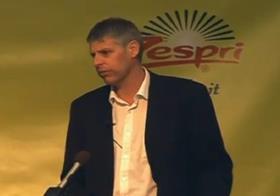
Story updated 11am UK time to include latest figures
The presence of kiwifruit pathogen Pseudomonas syringae pv Actinidiae (Psa) has now been confirmed on three orchards in New Zealand’s Bay of Plenty region as midnight on Thursday, 11 November (NZ time).
The country's single-desk kiwifruit export marketer Zespri confirmed that five kiwifruit orchards have been issued with a 'restricted place' notice by the country’s Ministry of Agriculture and Forestry (MAF), which is also continuing to investigate a total of 20 orchards where suspected symptoms have been noted.
Zespri also told Fruitnet.com it had received photos showing suspected symptoms of kiwifruit canker from 65 growers, as well as 35 emails from other growers declaring their orchards clear of the disease.
'It is important that growers continue on-orchard activities, while implementing orchard hygiene practices, particularly with movement of equipment between orchards,' said a spokesperson for the company, 'and that all growers in all areas are monitoring their orchards and reporting their assessment – positive and negative – back to the Zespri Grower Contact Centre.'
'Growers are asked not to send plant material to MAF or Plant & Food Research for testing, but to photograph the suspected material and email the images to the Zespri Grower Contact Centre,' the spokesperson added.
In reaction to the detection, the US and Australia have both banned importation of vines and other kiwifruit plant material from New Zealand, but are still permitting imports of the fruit itself.
While some major markets, such as Japan, Korea and Italy, are already host to kiwifruit canker and likely to stay open, industry figures have expressed concern about the future of important developing markets in canker-free India and China.
The suspected detection of the disease in the Bay of Plenty was announced late last week by New Zealand authorities, and confirmed as PSA on Monday.
MAF has issued restricted place notices for orchards with suspected outbreaks, and has advised the public to stay away from kiwifruit orchards altogether.
Testing is still underway to determine the precise strain of the bacteria. The results of that testing are expected to be announced next week.
The two best-known strains are those found in Japan, which has been successful managed for many years, or the more recent strain that has heavily damaged kiwifruit production in Italy over the last few years.
But David Yard of MAF’s Biosecurity New Zealand division told Business Day at this early stage the issue was largely moot.
“This issue of the strain is really a red herring,” he said. “All of the strains are potentially pathogenic, some greater than others. We are treating this as the worst possible situation. MAF’s initial aim is to eradicate this organism.
“We are working up a number of different eradication and control techniques. Certainly destruction `of infected vines` would be one of those eradication techniques. This is one that has been used in Italy and with some degree of success in other countries.”






No comments yet